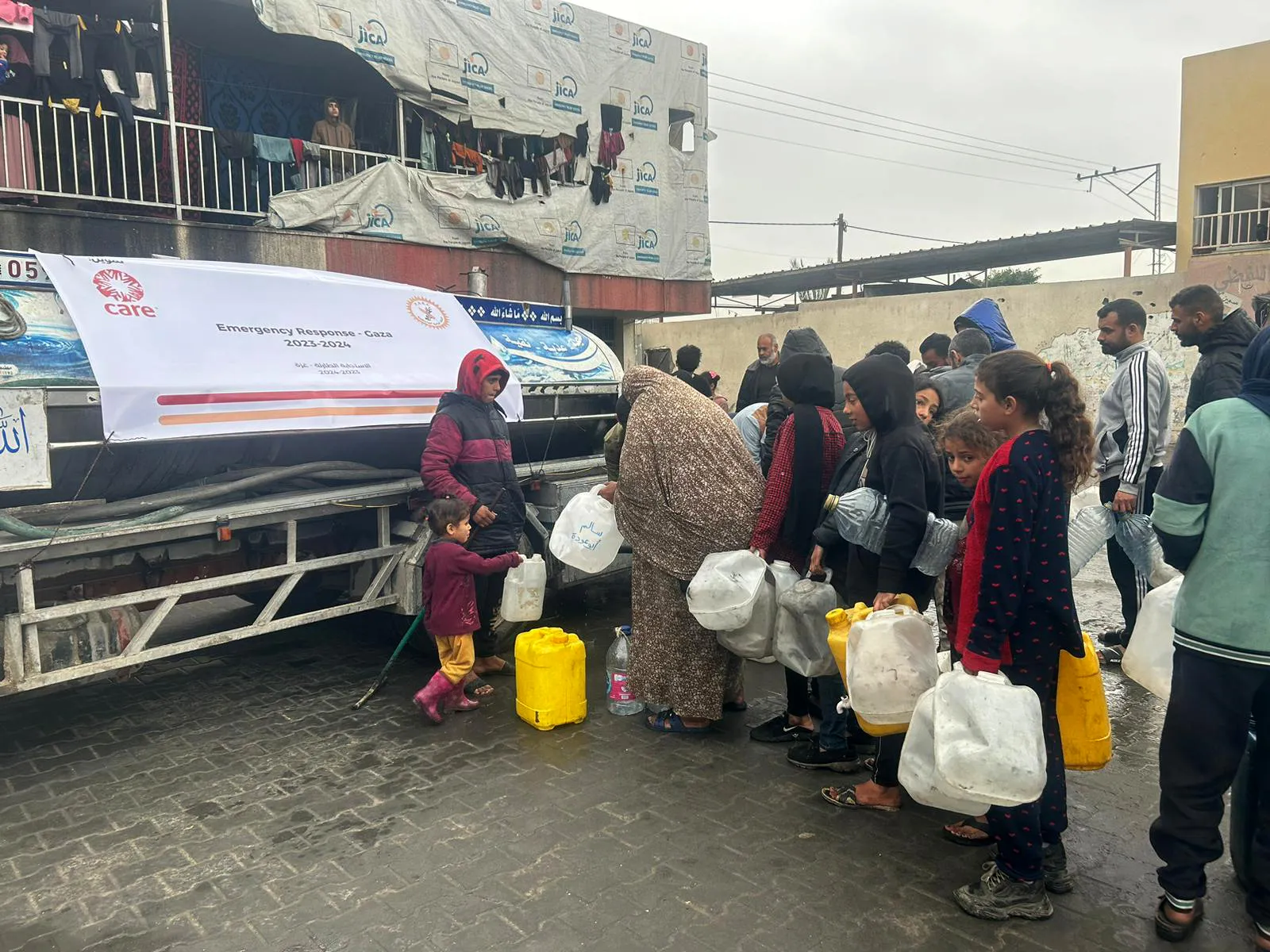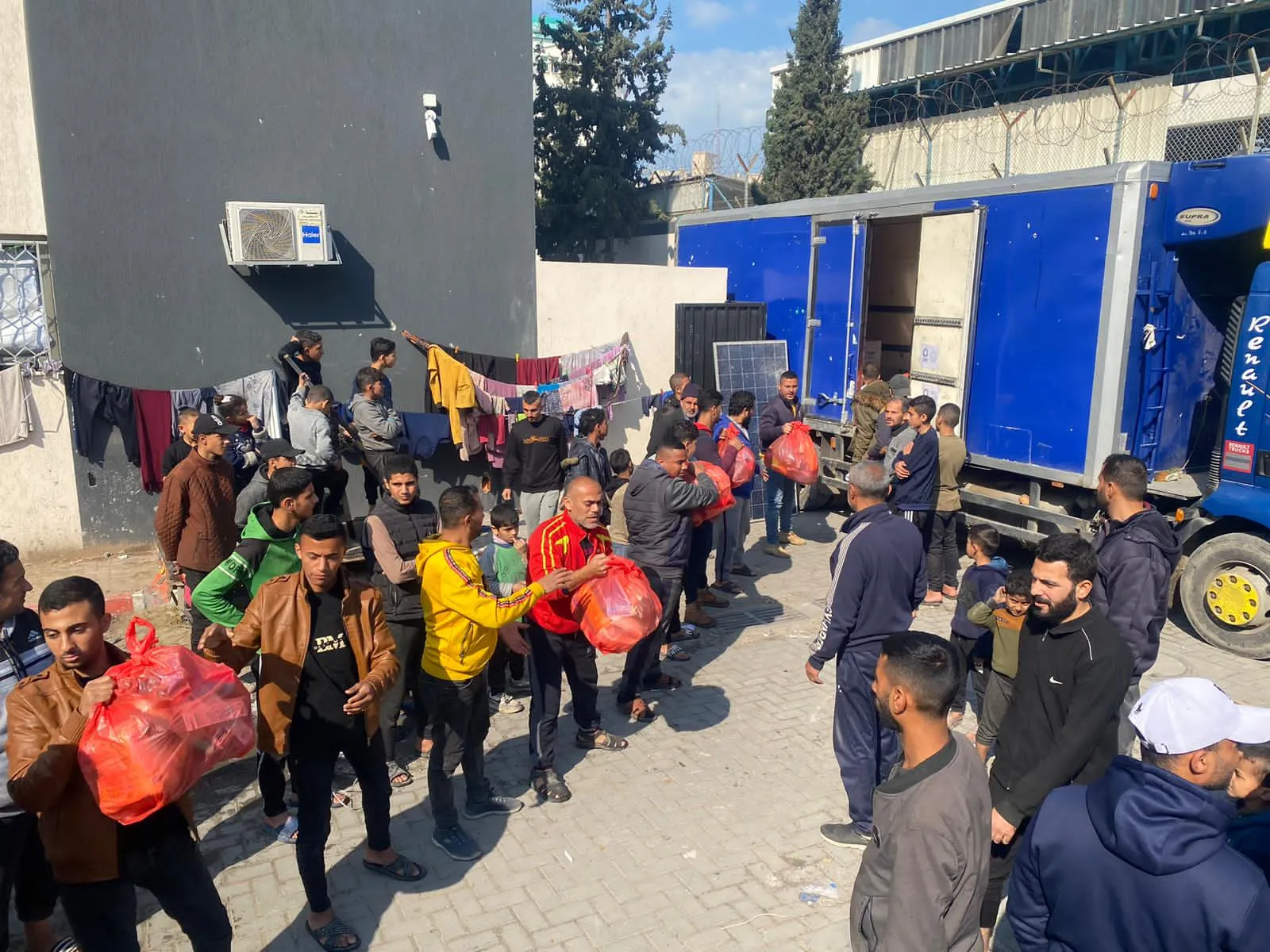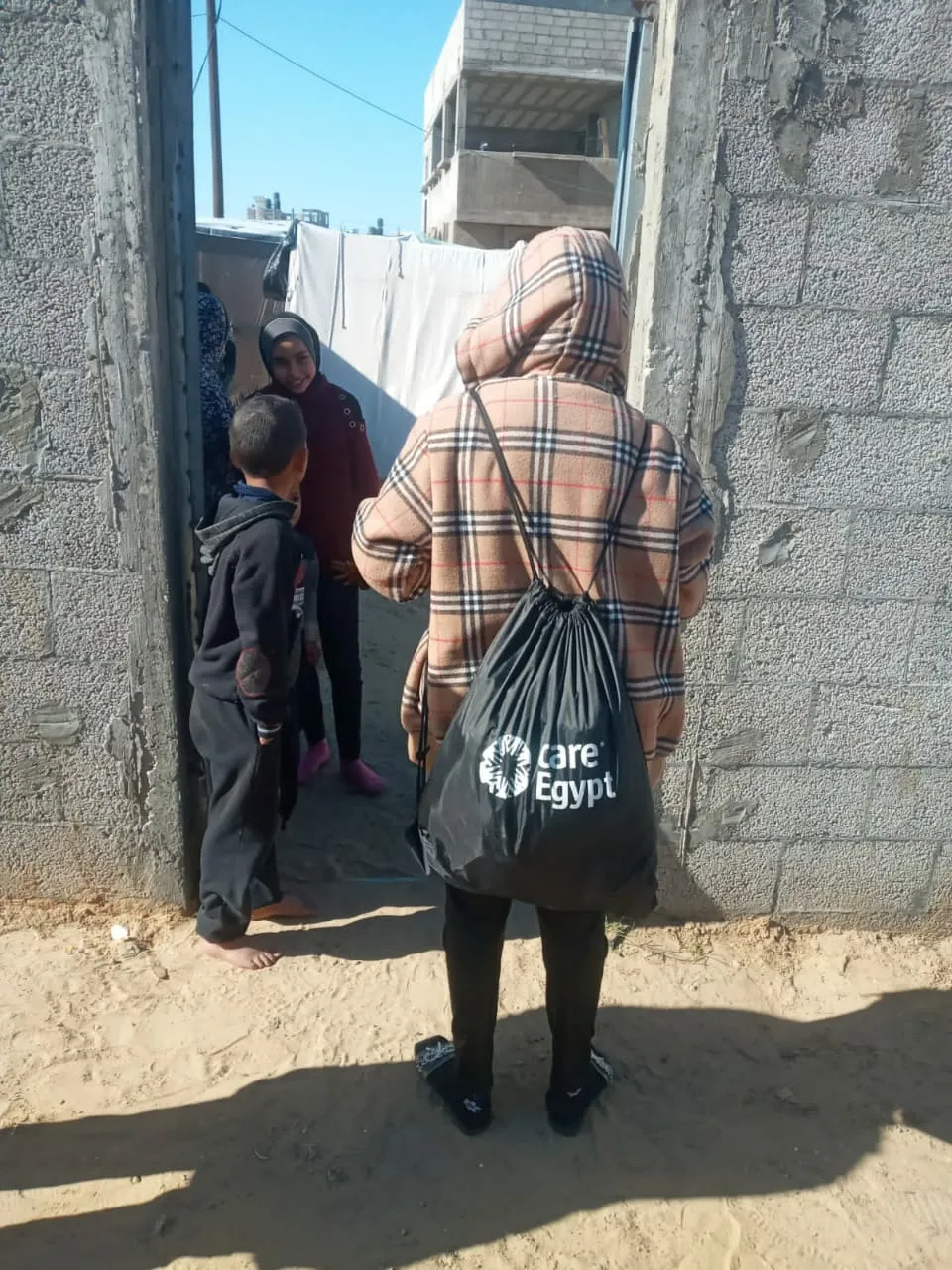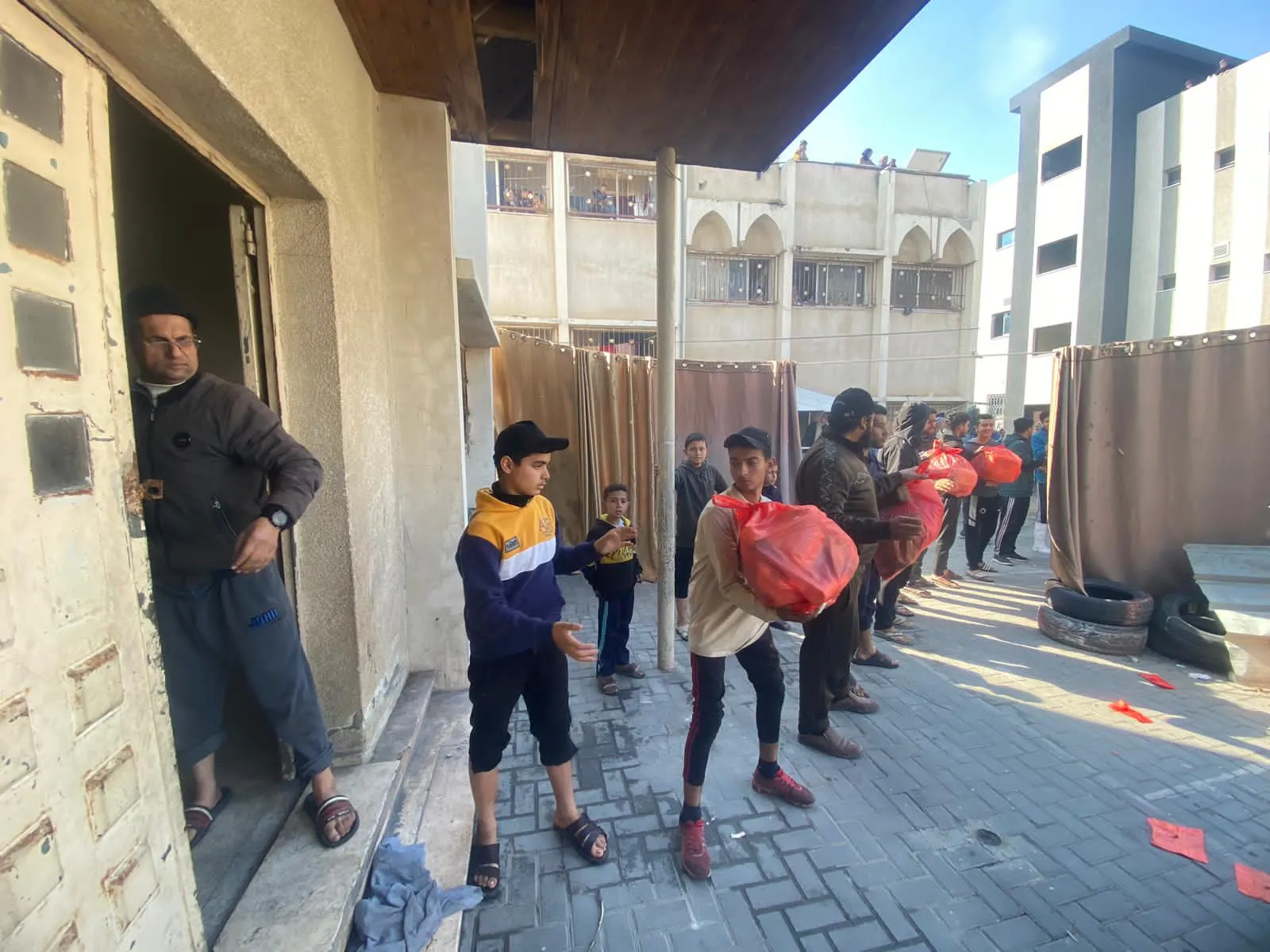Where is CARE today in terms of supplying aid to Gaza?
Since October, CARE has been able to support more than 250,000 people with more than 153,000 liters of water, helped 68,000 people through our mobile clinics, distributed more than 3,000 dignity kits to women and girls, and made sure that at least 11,000 people have the necessary tools and items to fix broken tents and shelters.
CARE has been in Gaza since 1948, and we are lucky to have local partners we have worked with for many years. They are tirelessly distributing aid to families who have lost everything during this war. Whenever possible, CARE is working with suppliers within Gaza who still have supplies in their warehouses.
This is how we were able to deliver bottled water, thousands of hygiene kits, and medicine during the first weeks when it was not possible for us to get trucks across the border. Unfortunately, a lot of the humanitarian warehouses have been damaged or destroyed, and the roads between the different locations are damaged and under constant threat of bombardment.
Some of the items that are much needed are no longer available in Gaza, which is why we also have trucks going from Cairo in Egypt across the border into Gaza. So far, CARE has been able to get 20 truckloads across, carrying a total of 14,650 hygiene kits (750 kits per truck) and reaching 85,000 people. Six additional trucks are on their way. However, the process of getting aid into Gaza from Egypt is long and arduous.
Why is it so difficult to get aid from Egypt into Gaza?
All the aid we deliver to Gaza must come through Egypt. We either import the goods to Egypt or buy them there directly, whenever possible. Fortunately, we have a big and experienced team in Cairo who could help us with setting up the systems and procedures required to get aid to people as quickly as possible. The Egyptian Red Crescent manages the trucks on behalf of the international community.
As CARE, we provide different supplies such as hygiene kits, tools for fixing damaged shelters or food.
The Red Crescent then arranges for the goods to go to the border in Rafah, through the inspection process, and then cross into Gaza. From Cairo, the trucks must go through the Sinai Peninsula. There are multiple checkpoints.




